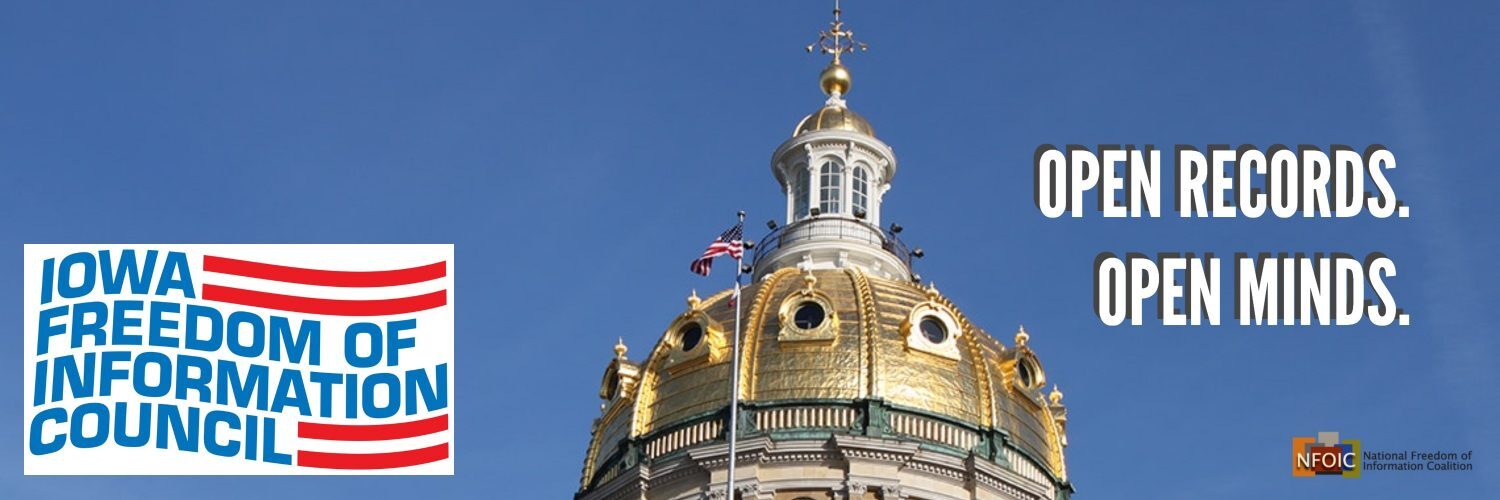The Iowa Supreme Court on Friday adopted amendments to its rules for expanded news media coverage of the state’s courts.
The amendments clarify the rules implemented on May 1, 2014 when the Supreme Court made the most sweeping changes since expanded media coverage of courtroom proceedings was first approved by the court in 1979.
The latest amendments make the following changes in the rules governing the presence of photographers, videographers and digital journalists in courtrooms. Specifically:
(1) The court amended Iowa Court Rule 24.3(2) to clarify that only one request for expanded news media coverage is required for all proceedings in the same case or trial, with the exception of initial appearances by defendants. Individual media companies still make their requests directly to the judge or magistrate for expanded news media coverage of an initial appearance by a criminal defendant.
In some judicial districts, judges have been requiring that separate requests for expanded news media coverage be submitted for each hearing, for the trial and again for sentencing.
(2) The court amended Form 1 of Rule 25.10, the News Media Coordinator’s Notice of Request for Expanded News Media Coverage of a Trial or Proceeding, to reflect the clarification the court made in paragraph (1).
(3) The court reiterated that Rule 25.2(6) clearly prohibits expanded news media coverage of the jury selection portion of a trial. Members of the news media and the public may be present during jury selection, and reporters are allowed to take notes using traditional pen and notebook. But journalists are prohibited from making photos or videos, engaging in live blogging or live social media usage or using laptop computers or smart phones during jury selection.
The court did not change the ability of journalists in general to make photos or videos or use live blogging or to engage in live social media activity during the remainder of the trial.
The court said a primary purpose of the prohibition during jury selection is to protect the privacy rights of jurors and prospective jurors and to protect them from undue discomfort or embarrassment. While the Supreme Court has a long legacy of encouraging public access to court proceedings, this access must be balanced and must preserve privacy considerations of citizens participating in those proceedings by serving as jurors.
(4) The court amended the expanded news media coverage rules to expressly permit coverage of oral arguments of the Iowa Supreme Court and Iowa Court of Appeals when such proceedings occur at locations other than the Iowa Judicial Branch Building in Des Moines.
Previously, the court rules did not expressly refer to oral arguments being held offsite from the judicial building.
(5) The court amended Form 4 of rule 25.10, the News Media Coordinator’s Notice of Request for Expanded News Media Coverage of an Appellate Court Proceeding to reflect the clarification the court made in paragraph (4).
The amendments adopted on July 22 take effect immediately. The Iowa Supreme Court order was signed by Chief Justice Mark Cady.
The revisions to the expanded news media coverage program the Supreme Court made two years ago were designed to reflect changing communications technologies and newsgathering practices.
The 2014 revisions allow journalists to provide live coverage of Iowa court proceedings using such techniques as texting, Tweeting and blogging.
The 2014 revisions also allow the use of mobile technologies like smart phones and tablet computers.
In addition, the 2014 revisions broadened the definition of “news media” representatives who are allowed to participate in electronic coverage of the judiciary. The broadened definition now includes non-mainstream journalists, such as people who blog.
Earlier this summer, a committee appointed by the Supreme Court conducted a review of the two-year-old rule changes to determine how the rules are working and whether any problems are occurring. The committee received comments from court personnel, as well as from Iowa’s 13 regional media coordinators.
Those regional coordinators handle the administrative arrangements for court approval of expanded news media coverage and coordinate the logistics of pool coverage by videographers and photographers.
The Iowa FOI Council is designated by the Supreme Court to oversee the work of the regional coordinators. The council also serves as the central coordinator of expanded news media coverage.
